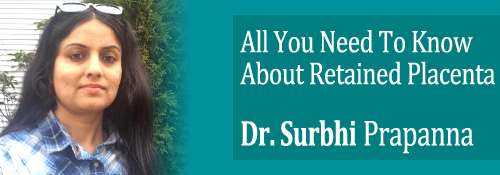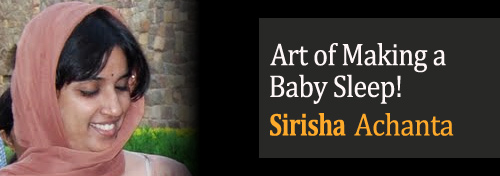All You Need To Know About Retained Placenta
Motherhood is a precious gift of God. It is the only time in life when you shall fall in love with someone you have not met. In spite of pregnancy being an uncomfortable and challenging experience, every woman wants to be a mom because she knows, “Feeling fat lasts nine months but the joy of becoming a mom lasts forever – Nikki Dalton.”
It was just a few days ago, when one of my close friends was diagnosed with retained placenta. She was very scared because of postpartum haemorrhage (bleeding after delivery) and had other symptoms such as fever, pain in abdomen, etc. The main problem was that in spite of being an educated woman, she was not able to understand her disease properly, because it is a rare disorder. I think proper knowledge and education are the best tools to fight any disease. This applies to both prevention as well as treatment. She was asking me “Why did this happen to me?”. As a friend (and a physician too) I had tried to explain the disease to her. Here I am sharing this information, hoping it will help others too.
During pregnancy, our body goes through many emotional and physiological changes. Placenta formation is one of them. The placenta is an important organ which begins to form in Week 4 of pregnancy. It is a circular vascular organ in the uterus of pregnant mammals, nourishing and maintaining the foetus through the umbilical cord. Normally placenta and foetal membrane are expelled from the uterus after the birth of the baby. Placental expulsion is associated with the third stage of labour.
The third stage of labour has two types of management options:
1. Physiological
2. Managed third stage
In physiological third stage, the uterus naturally starts to contract again after the birth of the baby and this causes the placenta to detach from the wall of the uterus. In managed third stage (usually in the case of high-risk pregnancy), certain medications like oxytocin are used. The medication helps the uterus to contract and push out the placenta and membranes.
In physiological third stage, the placenta may take up to 1 hour to come out and in managed third stage, it usually comes out within 30 minutes of your birth of the baby. If the placenta does not come out within this span of time (according to selected stage), then sit is termed as retained placenta. According to Wikipedia, “In humans, retained placenta is generally defined as a placenta that has not undergone placental expulsion within 30 minutes of the baby’s birth where the third stage of labour has been managed actively.”
Aetiology or causative factors
The causative factors can be divided into:
1. Uterine causes– Uterine atony (a condition in which uterus doesn’t contract enough to separate the placenta from the wall of the uterus) is a major cause of retained placenta. Occasionally, other uterine abnormalities like bicornuate uterus may be associated with it.
2. Placental causes– There may be three types of abnormalities in the placental attachment. These are called Placenta percreta, Placenta accreta and Placenta increta. In these conditions, the placenta attaches itself too deeply into the wall of the uterus. And depending on the severity and deepness, the condition is called placenta accreta, placenta increta or placenta percreta.
Sometimes a detached placenta is trapped behind a closed cervix, and then it is called a trapped placenta. And when the myometrium behind the placenta fails to contract and the placenta remains attached to the uterine wall for an abnormally long time following birth, the condition is called placenta adherens.
3. Other causes- A full bladder and the strong emotional reaction caused by labour may cause retained placenta in some cases.
Risk factors:
1. Previous history of retained placenta
2. Previous injury or surgery to uterus
3. Preterm labour
4. Pregnancy associated with hypertension
5. Induced labour
6. Multiparity
Signs and symptoms:
The most obvious sign of retained placenta is failure of all or part of the placenta to come out from the body within an hour after delivery. If a placenta remains in the body, women will experience following symptoms the day after delivery. They may be:
1. Heavy bleeding
2. Severe pain
3. Foul smelling discharge
4. Stomach cramps
5. Lack of breast milk
Diagnosis
Usually diagnosis is made on symptomatic basis. If your doctor suspects that it is a case of retained placenta, he may perform a USG test for confirmation. Transvaginal sonography is slightly superior in this examination, due to its higher resolution.
Management
General management:
1. Emptying the bladder
2. Change your position. An upright position is encouraged.
3. Breastfeeding or nipple stimulation to promote uterine contraction.
Manual removal of placenta– This is the most common practice to remove the placenta. The doctor may be able to remove retained placenta manually. It is usually carried out under anaesthesia. There are two indications for this method. First, if there is sudden occurrence of haemorrhage, but the placenta gives no indication of delivering and second, if after the birth, examination of placenta shows missing placental fragments. But this method carries an increased risk of infection.
Dilation and Curettage– It is the second method to treat retained placenta. Dilation refers to the opening of the cervix and curettage refers to the removal of tissues from the uterus through scraping under proper medication.
Complications-
1. Hypovolemic shock due to loss of blood
2. Postpartum haemorrhage
3. Puerperal sepsis (infection)
4. Hysterectomy
5. Uterine inversion
Alternative treatment “Homeopathic approach”-
Homeopathic remedies work on the principle of ‘individualization’, which means any remedy can be prescribed on the basis of individual symptoms. Still there are certain remedies that can work really well in the case of retained placenta.
Preventive medicine – Arnica is the best remedy that can be used at the beginning of and hourly throughout the labour. A dose of Arnica 200 can be given to the mother after childbirth to minimize the pain and to improve muscle control. It is also helpful for the prevention of postpartum haemorrhage.
Female remedies– Sepia, Pulsatilla and Cimicifuga are the main female remedies that can be used according to similarities in symptoms. For example:
Sepia– Most useful for women who have had multiple babies and are feeling exhausted during labour with violent bearing down pain as if all internal organs have come out. Mentally she is sad, irritable and indifferent to everything.
Pulsatilla – It is a good remedy when there is malposition of the baby and history of constipation and haemorrhoids in pregnancy.
Cimicifuga– When there is irregular but painful contraction. This remedy helps to dilate the cervix. Mentally, the patient is sensitive to noise and irritable. Cold makes symptoms worse.
Cantharis– It is another good remedy that has expulsive action. Strong desire to urinate but only a few drops are passed with burning accompanied by cutting pain is the most characteristic symptom that can be helped by Cantharis.
Anti-haemorrhagic remedies like phosphorus, millefolium, secal cor can be used to control postpartum haemorrhage according to similarity in symptoms.
Although “prevention is always better than cure” is true, unfortunately in the case of retained placenta, there are no fixed preventive measures. If there is history of retained placenta in previous pregnancy, the chances of recurrence are higher in the next pregnancy also. The best thing is that if there is history of retained placenta in the previous pregnancy or the mother has other risk factors – preterm labour, stillbirth or hypertension – inform the doctor about it, so he can try to manage your third stage of labour effectively with proper medication to prevent recurrence and other complications.
So after understanding all these important issues, my friend was feeling better, and I was too. I think if we have any medical problem in our life, following a healthy lifestyle and gathering all important information about it, is the way to solve it. So just do not be afraid. Eat healthy and live well.
Please note: This post contains guidelines and is not a substitute for medical advice or treatment. Please consult your doctor in case of issues or more information.
Surbhi is a qualified doctor (B.H.M.S.) with 5 year of teaching and clinical experience. She started her writing journey at the age of 17 and published various articles in famous news paper and magazines. The most incredible experience of her life is being a mommy of two cute dolls. Recently she started her own blog Positive Parenting. She loves to write on crafting, parenting issues and kids activity and wants to share my parenting journey with others.


